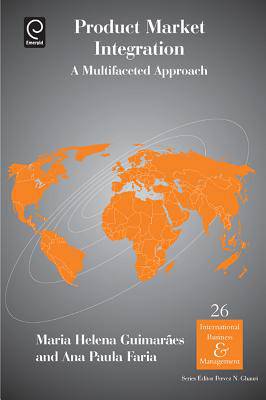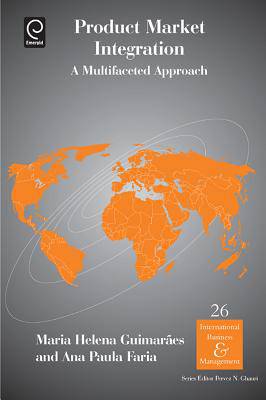
Je cadeautjes zeker op tijd in huis hebben voor de feestdagen? Kom langs in onze winkels en vind het perfecte geschenk!
- Afhalen na 1 uur in een winkel met voorraad
- Gratis thuislevering in België vanaf € 30
- Ruim aanbod met 7 miljoen producten
Je cadeautjes zeker op tijd in huis hebben voor de feestdagen? Kom langs in onze winkels en vind het perfecte geschenk!
- Afhalen na 1 uur in een winkel met voorraad
- Gratis thuislevering in België vanaf € 30
- Ruim aanbod met 7 miljoen producten
Zoeken
Product Market Integration
A Multifaceted Approach
€ 246,45
+ 492 punten
Omschrijving
The book addresses the issue of product market integration within the European Union (EU) from a multidisciplinary approach that ranges from economics to political science and sociology. Besides the contributions from academia the book also includes the perspectives of the European Commission - Directorate Industry and Enterprise, and of the business community, thus providing a comprehensive overview of the issue under analysis. The book is organized around three main themes: plural perspectives and assessments of current market integration in the EU, empirical analysis of trade and trade barriers within the EU, and discussion of today's challenges in market integration. As such, the book starts by assessing the functioning of the EU Internal Market and by evaluating the need for differentiated integration in an enlarged and increasingly heterogeneous EU. It then proceeds with three empirical studies relating to intra-EU trade, focusing on technical barriers, on the importance of institutional factors in explaining non-tariff protection, and on the consequences of legal and administrative regulations on trade opportunities. The book ends by presenting and discussing today's challenges to market integration in a globalized world as well as the role of the EU in shaping a new mode of governance in transatlantic market integration. Regulation and governance in integrated markets are recurrent topics in the various chapters. The book presents state-of-the art academic research on product market integration and given its multidisciplinary approach it has distinguishing features that make it unique in the literature.
Specificaties
Betrokkenen
- Uitgeverij:
Inhoud
- Aantal bladzijden:
- 206
- Taal:
- Engels
- Reeks:
- Reeksnummer:
- nr. 26
Eigenschappen
- Productcode (EAN):
- 9781849509862
- Verschijningsdatum:
- 18/08/2010
- Uitvoering:
- Hardcover
- Formaat:
- Ongenaaid / garenloos gebonden
- Afmetingen:
- 157 mm x 231 mm
- Gewicht:
- 417 g

Alleen bij Standaard Boekhandel
+ 492 punten op je klantenkaart van Standaard Boekhandel
Beoordelingen
We publiceren alleen reviews die voldoen aan de voorwaarden voor reviews. Bekijk onze voorwaarden voor reviews.








